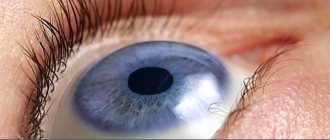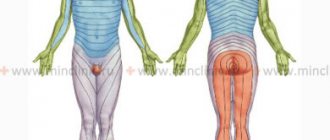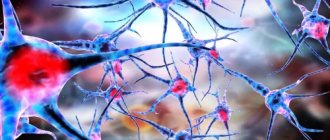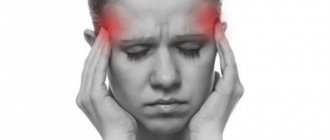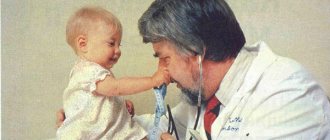Reasons why headaches occur in the temples and forehead
There are many reasons why a headache occurs in the forehead and temples. These symptoms often indicate a temporary or chronic disruption of the blood supply to brain cells. It is important to find out the exact cause of the deterioration in health in order to select an effective treatment regimen. The development mechanism for various pathologies is different, so treating a single symptom is ineffective - it is necessary to eliminate the main factor that provokes oxygen starvation of brain cells.
Physiological reasons
There are physiological reasons for headaches in the temples and forehead in a healthy person. This means that a medical examination will not show any abnormalities. In most cases, the patient needs proper rest, and in case of acute pain, take painkillers. Deterioration in health may be caused by the following factors:
- intense physical activity without sufficient rest is one of the causes of vascular disorders and pressing pain in the temples;
- mental stress, prolonged work at a monitor or with small parts are one of the causes of pain;
- heat stroke - prolonged exposure to open sunlight or high temperatures provokes acute headaches, dizziness and weakness;
- disruption of sleep, work and physical activity - lack of rest is especially dangerous;
- a sharp change in weather conditions, including atmospheric pressure, causes disturbances in vascular tone and painful sensations in the temples.
Stress and chronic fatigue are a common cause of headaches and pressure on the temples and forehead. These symptoms disappear after proper rest and return when the regime is violated again. Doctors recommend avoiding overwork, as it causes increased stress on the heart and blood vessels, disorders of the nervous and other systems.
Migraine
Migraine is an acute headache that occurs without a specific cause. The examination does not reveal any organic disorders, damage to blood vessels or the brain. It is often one-sided, affecting the left or right side of the head, the temple area. Migraines manifest themselves in attacks that last up to several hours, and moderate pain can persist for up to several days.
A characteristic feature of migraine is its aura. It includes symptoms that begin to appear some time before the main headache attack. It can be determined by the following characteristics:
- weakness, drowsiness, decreased concentration;
- increased sensitivity to bright light, loud sounds;
- nausea;
- auditory and visual hallucinations (appearance of dark circles in the field of vision) are possible.
Migraine is a chronic disease that can first appear in both childhood and adults. If attacks occur frequently, you may notice a certain relationship with the factors that cause them. Thus, in some patients, migraine worsens at certain times of the year and is associated with moving or other reasons. To treat this disease, special medications are prescribed, since conventional painkillers available for use at home do not have the necessary effect.
Vascular diseases
Severe headaches in the forehead and temples are often caused by insufficient blood supply to certain areas of the brain. The main reason for this is the weakness of the blood vessels and insufficient elasticity of their walls. Vascular pathologies can be congenital or acquired, and often appear in old age. They lead to ischemia of cells and tissues, as a result of which they cannot perform their functions. There are several diseases that can cause oxygen starvation of brain cells, headaches in the temples and frontal part.
- Hypertension is a persistent increase in blood pressure. This condition leads to a decrease in vascular tone and provokes a greater load on the heart. Blood pressure readings must be stabilized by taking medications and a special regimen of physical activity. Attacks of hypertension are dangerous because there is a risk of rupture of important vessels and the development of hemorrhagic stroke.
- Hypotension – decreased blood pressure. This is an equally dangerous condition in which ischemia of brain tissue occurs. Blood and nutrients are supplied to the cells in insufficient quantities. Chronic low blood pressure can cause ischemic stroke, as well as pressing pain in the temples and frontal part of the head.
- Atherosclerosis is a chronic metabolic disorder in which the level of cholesterol and lipoproteins in the blood increases. This leads to the formation of plaques on the inner wall of the arteries. The main danger of the disease is the narrowing of the lumen of blood vessels, which entails insufficient blood flow to certain areas and at the same time an increase in blood pressure.
The elasticity of veins and arteries decreases in old age. However, vascular disorders can also occur in young people and children. Among the main causes of headaches in the frontal region and temples caused by vascular diseases are poor diet, excess consumption of fatty foods, excess weight, excessive physical activity or a sedentary lifestyle. Doctors recommend periodically undergoing examinations and measuring blood pressure, since chronic diseases in the early stages can be asymptomatic.
Diseases of the cervical spine
If a patient often has headaches, forehead and temples, this may indicate diseases of the cervical spine. This area contains important arteries that carry blood to the brain. Their compression leads to ischemia of cells and tissues, deterioration in the functioning of individual areas. For pain in the head, forehead and temples, a comprehensive diagnosis is required to determine the most common neck diseases.
- Cervical osteochondrosis is one of the most common disorders. The disease is manifested by dystrophic changes in the bone and cartilage tissues of the vertebrae, deterioration of their nutrition and blood supply. This leads to overgrowth of the bone surfaces of the joints, the formation of uneven edges, osteophytes and growths. These formations compress the vessels and block blood access to important areas of the brain, causing ischemia.
- Vertebral subluxations are a displacement of the articular surfaces of bones, as a result of which the segments do not lose their integrity, but change their location relative to each other. They arise as a result of injuries, degenerative processes, weakness of muscles and ligaments. Subluxation causes acute pain in a certain area of the neck and decreased motor activity. In addition, it may be the reason why the frontal part of the head and temples hurt.
- Deformation of the spine is a deviation of its axis in the anterior, posterior or lateral directions. The process can develop both in childhood and in adults. It is accompanied by headaches in the frontal and temporal parts, dizziness, and painful sensations during movement. It is important to undergo periodic examinations and follow recommendations for the treatment of scoliosis, lordosis or kyphosis, since the disease can progress.
For pain in the frontotemporal part of the head associated with diseases of the cervical spine, complex treatment is recommended. The doctor prescribes exercises to strengthen muscles and stretch ligaments that will support the spine and prevent its further curvature. In some cases, surgery may be required. It is necessary if the vertebrae are severely deformed, block movements in the neck and cause acute pain.
Eye diseases
Diseases of the visual system can also cause pain in the frontotemporal part of the head. The cause is constant eye strain, inflammatory processes, and blurred vision. These diseases require regular examination by an ophthalmologist, wearing glasses or contact lenses, and drug treatment. In some pathologies (cataracts), surgical intervention is possible, which will restore vision and stop the further development of the disease.
- Cataract is clouding of the lens. This organ acts as a lens and is involved in the refraction of light. If it becomes opaque, vision gradually deteriorates until it is completely lost. Most cases of cataracts are associated with age-related changes. The disease can also be caused by injuries, diabetes, certain eye diseases, or be congenital.
- Conjunctivitis is an inflammation of the conjunctiva, the mucous membrane of the eye. The disease is most often caused by a viral infection, less often by a bacterial infection. It is manifested by redness of the eyes, lacrimation, exacerbation of the reaction to bright light, headaches in the temples and frontal part. All cases of conjunctivitis require timely treatment, since they can be complicated by the addition of a bacterial infection and the development of purulent inflammation.
- Astigmatism is a disease caused by an irregular shape of the cornea, or less commonly, the lens of the eye. In this case, the ability to focus on near or distant objects is impaired, and the image looks blurry. For astigmatism, glasses or contact lenses are prescribed, and some patients require surgery.
If the patient has a severe headache, forehead and temples after changing glasses or contact lenses, it is worth contacting an ophthalmologist. Their incorrect selection causes tension in the muscles of the eyeball due to difficulties focusing on near or distant objects. In this case, you should contact your ophthalmologist to change lenses. However, a short period of adaptation to new glasses is considered normal, and during the first few days a person may experience headaches, temples and forehead pain.
Infectious diseases
Flu, sore throat, ARVI are common consequences of decreased immunity during the cold season. These diseases are manifested by soreness and sore throat, fever, cough, headache in the frontal and temporal parts. They are caused by a viral infection that spreads quickly through airborne droplets and is therefore highly contagious (infectious). Treatment involves bed rest, drinking plenty of fluids, and, if necessary, taking antipyretics, vitamins and antibiotics.
Meningitis is one of the most dangerous reasons why the frontal part of the head and temples hurt. It is manifested by inflammation of the soft, arachnoid or hard membranes of the brain. The main symptom is acute pain that does not stop even with bed rest. Meningitis can be caused by a viral or bacterial infection; the most dangerous form is meningococcal inflammation. The treatment regimen is based on antibiotics, which must be selected separately according to the type of pathogen.
Pathologies of the central nervous system
If you often have a headache in your temples and frontal area, this may indicate various pathologies of the central nervous system. Inflammatory or degenerative changes in nerve fibers provoke acute headaches. They must be distinguished from brain tumors and infectious diseases. Traumatic brain injuries can also cause long-term effects such as headaches.
Disorders of the central nervous system can be diagnosed at any age. However, older people are more susceptible to developing dystrophic changes in cells and tissues. It is important to monitor your well-being and if you experience frequent headaches, absent-mindedness, or memory loss, consult a doctor for a comprehensive examination.
Other reasons
There are a huge number of reasons why the head hurts in the frontal part and temples. Some of them do not require emergency treatment and occur periodically in most people. However, a number of disorders can progress and lead to dangerous complications, so it is important to seek medical help in a timely manner. Painful sensations may be a symptom of the following disorders:
- inflammatory diseases of the maxillary sinuses;
- inner ear diseases;
- increased intracranial pressure;
- benign and malignant neoplasms in the brain;
- pathologies of the endocrine system, which leads to hormonal imbalance and chronic metabolic diseases;
- Stroke is an acute disorder of blood circulation in the brain.
A large part of the population suffers from dependence on weather conditions. The most difficult period is a sharp change in atmospheric pressure. When the weather changes, as well as when moving to another climate zone, acute headache, nausea and weakness, and decreased performance are observed.
Causes of pain
The head in the forehead area can hurt without damage to the internal organs. The cause may be mental fatigue. For knowledge workers, tension accumulates in the center of the forehead. At the end of the working day, a pressing feeling arises. A light massage of a point in the center of the forehead, and then upward, to the sides, will help to remove it.
Head pain in the forehead area may occur due to poisoning by toxic fumes. Such sensations often haunt employees of household chemicals and building materials stores. Low-quality products have a strong odor and emit fumes that cause pain, dizziness, and nausea. People who are sensitive to this should change their job or profession, and wear a respirator before leaving.
Severe headaches are sometimes caused by cerebral vasospasm. This condition manifests itself against the background of smoking, alcohol abuse, and sometimes due to changes in climate zones. Pain can also be triggered by physical or emotional stress.
Read also: Sweating head
When should you consult a doctor?
Doctors at the Clinical Brain Institute recommend undergoing an examination if your headaches are too intense or occur frequently. If they go away on their own during the day, there is no cause for concern. However, some symptoms should promptly consult a doctor. These include:
- memory losses;
- exacerbation of reaction to light, auditory stimuli;
- impaired coordination of movements;
- increase in body temperature to critical levels;
- dizziness, fainting.
You can also take care of your own health at home. Regardless of age and type of activity, it is recommended to periodically measure blood pressure using a tonometer. Scheduled examinations are also a prerequisite. They include examination by a general practitioner, ophthalmologist, otolaryngologist, and electrocardiography.
Examination methods
Accurate and timely diagnosis is the main condition for recovery from headaches. After examination, the therapist will prescribe additional examination techniques that will help determine the exact cause of the symptoms. Depending on the results of the initial examination and medical history, the following methods may be required:
- blood test to determine inflammatory processes, identify viral and bacterial pathogens of various diseases;
- Dopplerography - examination of blood vessels using ultrasound with the addition of a contrast agent, used to diagnose the arteries of the neck and head;
- MRI, CT are the preferred methods for diseases of the cervical spine and are the most informative in cases of suspected vascular pathologies and neoplasms in the brain;
- electrocardiography is one of the basic methods of examining the heart, which consists of determining the heart rhythm;
- specific blood tests that will determine the level of hormones, vitamins and other substances;
- examination by an ophthalmologist, otolaryngologist, neurologist.
The Clinical Brain Institute has modern equipment for diagnosing headaches. If necessary, inpatient monitoring of the patient may be offered to monitor various indicators around the clock.
Diagnostics
You should not postpone a visit to a specialist if, along with severe pain in the crown area, the following clinical manifestations are observed:
- increased pain;
- visual impairment;
- deterioration in general health;
- memory disorder;
- increase in general temperature;
- nausea, vomiting.
You can contact the CELT clinic, and our specialists will help you get rid of not only pain, but also the reasons that caused it.
In order to determine the cause of pain, our specialists carry out:
- magnetic resonance imaging (MRI);
- computed tomography ();
- blood test for infections;
- blood pressure monitoring.
If necessary, an examination by an ophthalmologist or surgeon may be scheduled.
Treatment of headaches in the temples and forehead
Treatment for headaches at the Clinical Brain Institute is prescribed individually. The scheme will include steps aimed at eliminating both the root cause and symptoms of the disease:
- painkillers - help with mild headaches, can be found in any home medicine cabinet;
- antibiotic therapy is the main stage of treatment of inflammatory diseases of the eyes, brain, and inner ear;
- drugs to normalize blood pressure in case of hypotension or hypertension - they are often taken in a course to prevent acute attacks;
- additional techniques effective for diseases of the cervical spine: physiotherapy, exercise therapy;
- surgical intervention - is prescribed only in cases where conservative therapy is ineffective (for neoplasms, aneurysms, cataracts and other pathologies).
At home, it is important to follow all doctor’s recommendations and take prescribed medications on a precise schedule. In addition, it is necessary to follow the principles of proper nutrition and monitor your weight - this will help avoid chronic vascular diseases. For headaches, full sleep and a cold compress on the forehead and temples are recommended.
If you have a headache in the frontal region and temples, this can either be a sign of dangerous diseases or a consequence of ordinary fatigue. The Clinical Brain Institute specializes in the diagnosis and treatment of such disorders. The main advantages are modern equipment for examinations and analyses, high qualifications and many years of experience of specialists.
Clinical Brain Institute Rating: 4/5 — 9 votes
Share article on social networks



